May 16, 2025 | 05:38 GMT +7
May 16, 2025 | 05:38 GMT +7
Hotline: 0913.378.918
May 16, 2025 | 05:38 GMT +7
Hotline: 0913.378.918
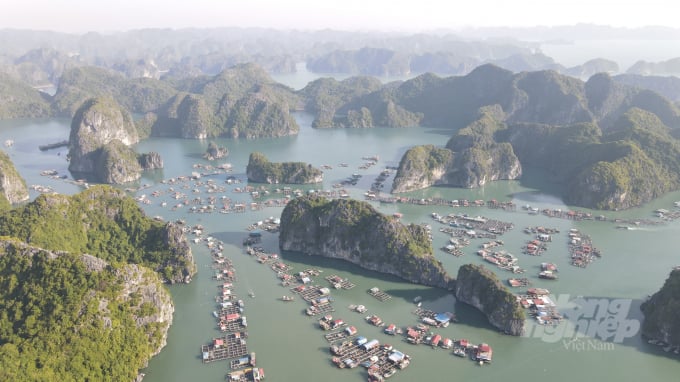
Fish farming in cages in Ben Beo Bay, Cat Ba. Photo: Dinh Muoi.
After the Hai Phong Municipal People's Committee authorized the locations for cage aquaculture in Cat Ba between 2021 and 2025, the department of agriculture issued provisional instructions on the issue in the direction of environmental protection and pollution mitigation.
According to the instruction, companies, and people involved in cage aquaculture on the Cat Ba islands' bays must register and commit to environmental and food safety, sustainability, and compliance with applicable laws.
Additionally, cage aquaculture facilities are required to locate in areas designated for fisheries culture by competent parties and to obtain decisions from competent state bodies about the assignment and leashing of aquaculture areas.
Facilities serving the activity and food safety in culture method must assure safety while causing little disruption to the environment and culture area.
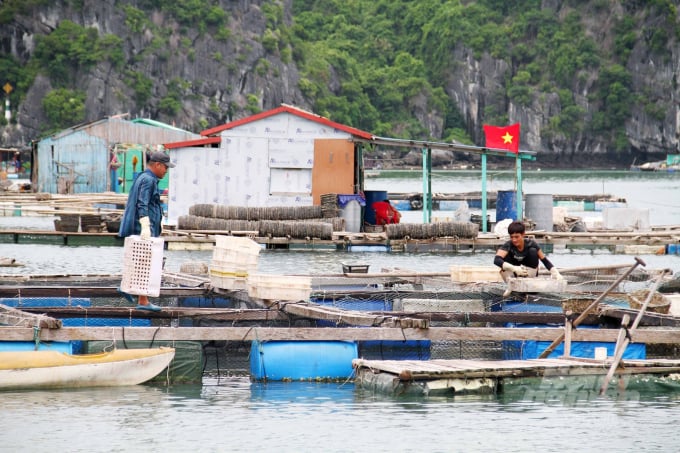
In the coming time, cage aquaculture in Cat Ba will be implemented sustainably, minimizing environmental pollution. Photo: Dinh Muoi.
Regarding the materials, equipment, and instruments used in aquaculture, the design of the cage must meet the following requirements: simplicity of cleaning and disinfection, portability, the convenience of installation, resistance to waves, and worker safety.
Regarding the materials used to construct cages, rafts, and buoys, they must have a clear origin, correspond to fundamental criteria, and provide firmness, durability, and resistance to waves, wind, disinfectants, and toxins, as well as not adversely influence the landscape or environmental cleanliness.
According to the Hai Phong Fisheries Sub-Department, aquaculture facilities are encouraged to prioritize the use of HDPE materials for cages and floats in the coming years, by the Department of Agriculture and Rural Development's guidance, while the engine, equipment, and machinery used must not leak gasoline or oil into the environment.
Facilities are not permitted to use foam buoys directly or to cover them with tarpaulins or nets as buoys, and cage frames, buoys, and nets must be constructed of materials that do not pollute the environment, are not toxic to farmed aquatic products, are not harmful to aquatic life, and do not allow live aquatic products to escape into the environment, as well as include warning devices for navigation activities.
To prevent pests and hazardous animals, auxiliary works such as canteens, restrooms, and dormitories must be clean and do not disrupt production operations. Storage for foods and materials used to create feeds must be covered, airy, and moisture-free.
Each facility must install trash cans with lids and relocate them to a centralized garbage collection location, where the waste storage area must be kept separate from the area where dead seafood is handled, emphasizing the importance of not littering and releasing dead aquatic products and other types of waste into farming areas and natural water environments, which degrade the landscape and pollute the environment.
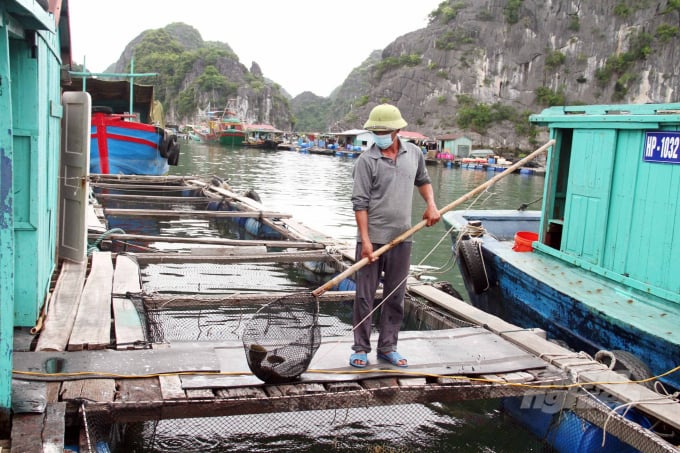
Farming facilities are encouraged to give priority to using HDPE materials for cages and floats. Photo: Dinh Muoi.
Mr. Do Duc Thinh, Deputy Director of the Hai Phong Fisheries Sub-Department, stated that in the coming period, households registering for aquaculture must commit to strictly following regulations regarding disease prevention and treatment, the use of chemicals and biological products, and environmental remediation.
On the other hand, it is necessary to clean the nets regularly during the rearing process to ensure that the cages remain well ventilated and clean, as well as to monitor the water environment and the activities of the cultured subjects daily; if the water environment is poor, the fish will not eat or drink. When sickness strikes, immediate action must be taken to contain it and animals must not be moved from one feather or raft to another while the disease is there.
Aquaculture farm owners utilize only medications, chemicals, biological goods, and environmental remediation agents that are permitted for circulation in Vietnam and have an expiration date. When antibiotics are administered, the causative agent must be properly recognized and the antibiotics must be utilized according to the manufacturer's or technical staff's recommendations.

The cage aquaculture is being reorganized towards sustainability, ensuring the environment. Photo: Dinh Muoi.
Regarding trash collection, stringent enforcement is required to guarantee that rubbish is collected for treatment and does not harm the environment or severely impact the landscape or water supplies. Unused food, dead fish, down feathers, rafts, and adjacent areas should not be littered.
According to the Cat Hai District People's Committee, there are 440 aquaculture enterprises on the Cat Ba islands' bays, with 516 huts, 8,216 cages, 58,790m2 bilvavia farming rigs, and 1,298 employees.
These facilities are located in Cat Ba Bay, Lan Ha Bay, Ben Beo Bay, Tra Bau Bay, and Gia Luan Bay, where 371 farms are held by residents of Hai Phong and 69 are owned by residents of other areas.
After demolition, the anchoring for aquaculture on the bays of the Cat Ba archipelago would be centered in two regions, according to the Hai Phong Department of Agriculture and Rural Development's plans.
The region between the mouth of Hang Vem and Vung O in Ben Beo bay in Cat Ba town is intended to be 41 hectares of farming, with around 118 agricultural facilities and 1,888 cages installed. The projected agricultural area at Gia Luan wharf is 15 hectares, with about 12 raising facilities totaling 192 cages.
Mr. Hoang Trung Cuong, Vice Chairman of the Cat Hai District People's Committee, said that each family would be raised with a scale of 16 cages and two floating houses to care for in the near future.
Cat Hai district has encouraged entrepreneurs to develop ecologically appropriate cages, which will cost around VND 500 million per home.
In terms of capital, Cat Hai district has proposed to the Hai Phong City People's Committee that families engaged in cage fish farming be eligible for a bank loan of less than VND 1 billion with a three-year interest rate subsidy.
Cat Ba homes raising priority cages will be allocated water surface with no yearly rent; non-Cat Ba households will be required to bid for and pay water surface rent in accordance with rules.
Translated by Linh Linh

(VAN) Use of high-quality broodstock and biotechnology is regarded as the most effective approach to ensuring sustainable and economically viable shrimp aquaculture ahead of climate change and the emergence of increasingly intricate disease patterns.
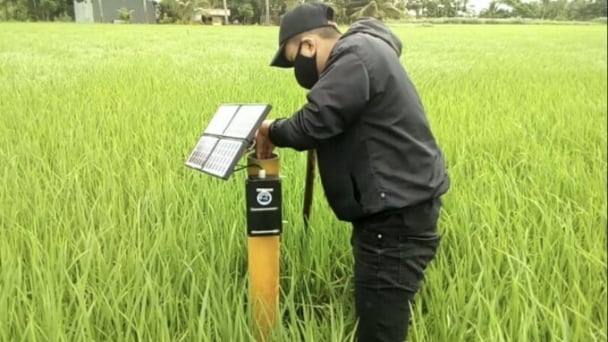
(VAN) Carbon farming is a form of agricultural practices that helps absorb more greenhouse gases than it emits, through smart management of soil, crops, and livestock.
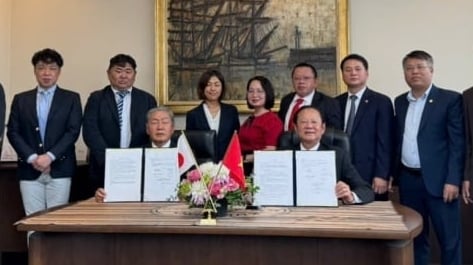
(VAN) This is a key content of the Memorandum of Understanding recently signed between the Vietnam Fisheries Society and Kunihiro Inc of Japan.
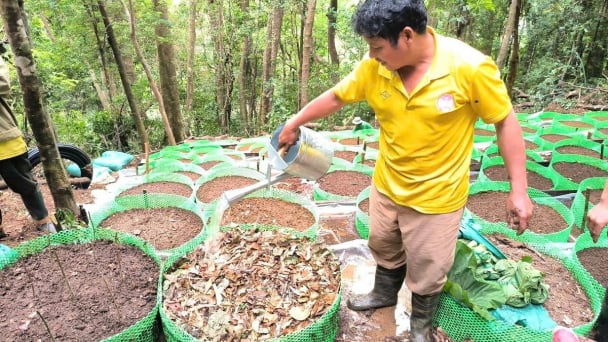
(VAN) To achieve the goal, local authorities and businesses in Kon Tum province have fully prepared the necessary conditions for the new Ngoc Linh ginseng planting season.

(VAN) Jiangsu province is gearing up to host training programs in Phnom Penh, the capital of Cambodia, this year to establish the Fish and Rice Corridor.
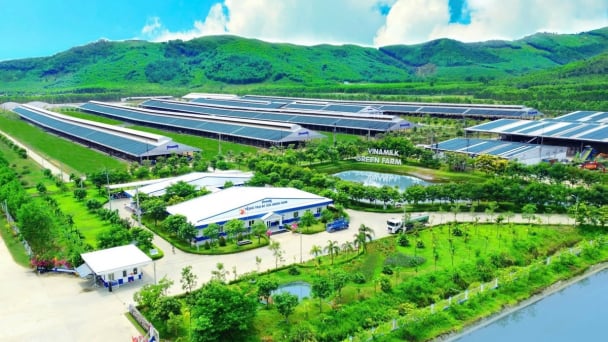
(VAN) Le Hoang Minh, representing Vinamilk, shared the company's experience in energy saving and green energy transition for production at a workshop held during the P4G Summit.
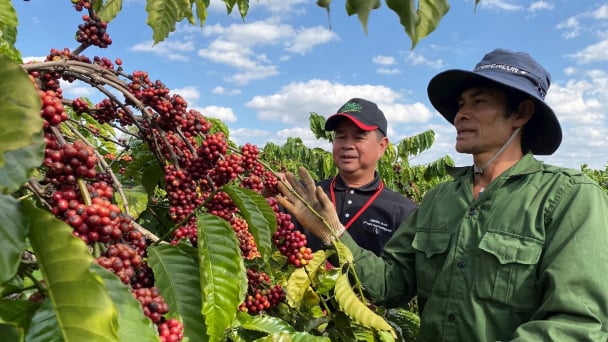
(VAN) Businesses emphasize fairness and equality when integrating social factors into their sustainable development strategies.